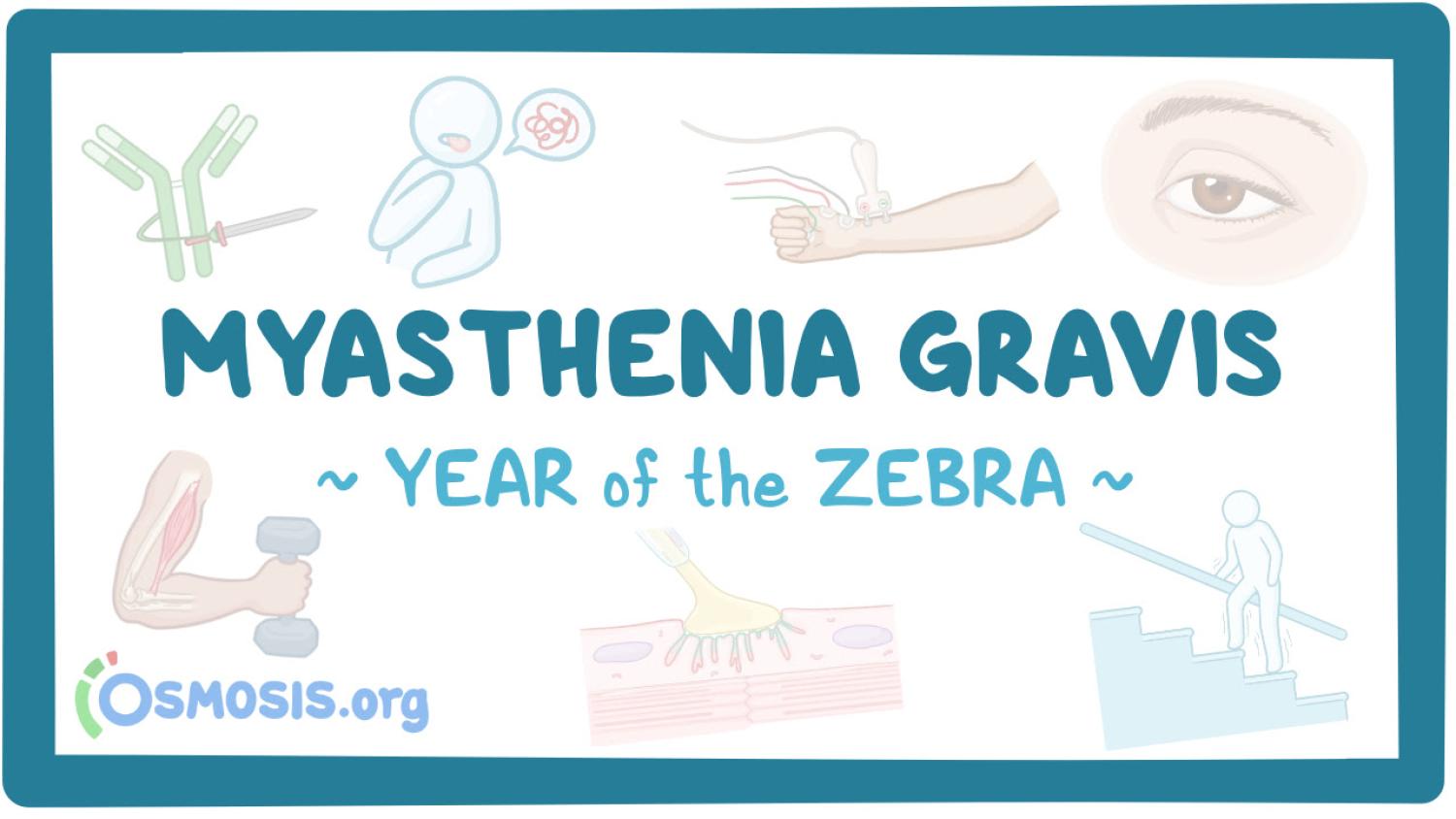
Rare Disease Education: Myasthenia Gravis
Editor: Kelsey LaFayette, DNP, RN, FNP-C
"When you hear hoofbeats, think of horses, not zebras,” is a common saying in medical education that means you should think of common conditions first, instead of rare ones, in making a diagnosis. “Rare” is a relative term though and about 7,000 rare, or "zebra," conditions affect more than 350 million individuals worldwide. Although these conditions collectively affect an enormous number of people, each of these conditions individually is rare enough that it can be difficult to secure the resources to study them and to develop treatments and cures. Likewise, awareness of rare conditions may be low and health care professionals may not be familiar with their signs and symptoms making it more difficult to reach a correct diagnosis and provide effective treatments.
To increase knowledge about rare conditions, Osmosis and the National Organization for Rare Diseases (NORD) have collaborated on an initiative to bring education and awareness to the public. We are excited to be a part of this initiative because we believe everyone deserves quality health care, no matter how rare their condition.
Zebra Highlight: Myasthenia Gravis
Locks and their keys are essential in our everyday lives. They provide security while giving us the ability to access what they protect. If our muscles had locks that unseal movement, the key would be held by the nerves in the form of a neurotransmitter. In this month’s Zebra, Myasthenia Gravis, the immune system mistakenly attacks the locks, damaging them and making it difficult for the keys to fit. As a result, communication between nerves and muscles is disrupted.
Myasthenia gravis is a rare autoimmune disorder in which antibodies attack the receptors on the surface of skeletal muscle cells that bind with the neurotransmitter acetylcholine. This results in fewer acetylcholine receptors, causing failed nerve transmission at certain neuromuscular junctions.
This can manifest differently depending on which muscle group or groups are involved. In some individuals, the disease may be limited to eye muscles, causing drooping of the upper eyelids and/or double vision. In those with generalized myasthenia gravis, muscles of the eyes, face, jaw and throat region, limbs, and even respiratory muscle may be affected. Symptoms can manifest as difficulty swallowing and speaking, and weakness after exertion that improves with rest. Some individuals may experience a life-threatening myasthenic crisis, with sudden and severe weakness of the respiratory muscles, requiring respiratory assistance.
Myasthenia gravis has a prevalence of approximately 14-40 per 100,000 individuals. It affects women more than men and symptom onset most commonly occurs during the second or third decade of life for women and fifth or sixth decade of life for men.
To learn more about the diagnosis and treatment of myasthenia gravis, watch the dedicated Osmosis video on YouTube and Osmosis.org.
Meet Greg
Greg is happily married and a father of three. He enjoys walking his dog and spending time with his family. In 2002, his life changed after he was diagnosed with generalized myasthenia gravis. His perspective and attitude towards life have completely changed.
Watch as he describes his disease and expresses gratitude for the people who support him along the way.
Organization Taking Strides
In 1952, when teenager Pat was diagnosed with myasthenia gravis, Jane Ellsworth realized that only little information was readily available. That is why Jane established the Myasthenia Gravis Foundation of America, Inc. Today the foundation has grown into the largest patient organization solely dedicated to finding a cure for myasthenia gravis while improving the lives of people living with the disease.
The foundation has many trustworthy resources on hand for patients and their families. They provide comprehensive educational materials to help understand and manage myasthenia gravis. They even have a mobile app called MyMG for managing symptoms, tracking medication, and accessing support resources.
On the patient support front, the foundation organizes support groups for patients and caregivers to share experiences and offer mutual support, both online and live through a dedicated helpline. They even have a community online blog and podcast to provide a platform for sharing experiences.
In search of a cure, the foundation supports research studies and clinical trials aimed at better understanding MG and developing new treatments. They also host scientific conferences to share the latest research findings and advancements in treatment.
To learn more about the Myasthenia Gravis Foundation of America, Inc. visit their website.
